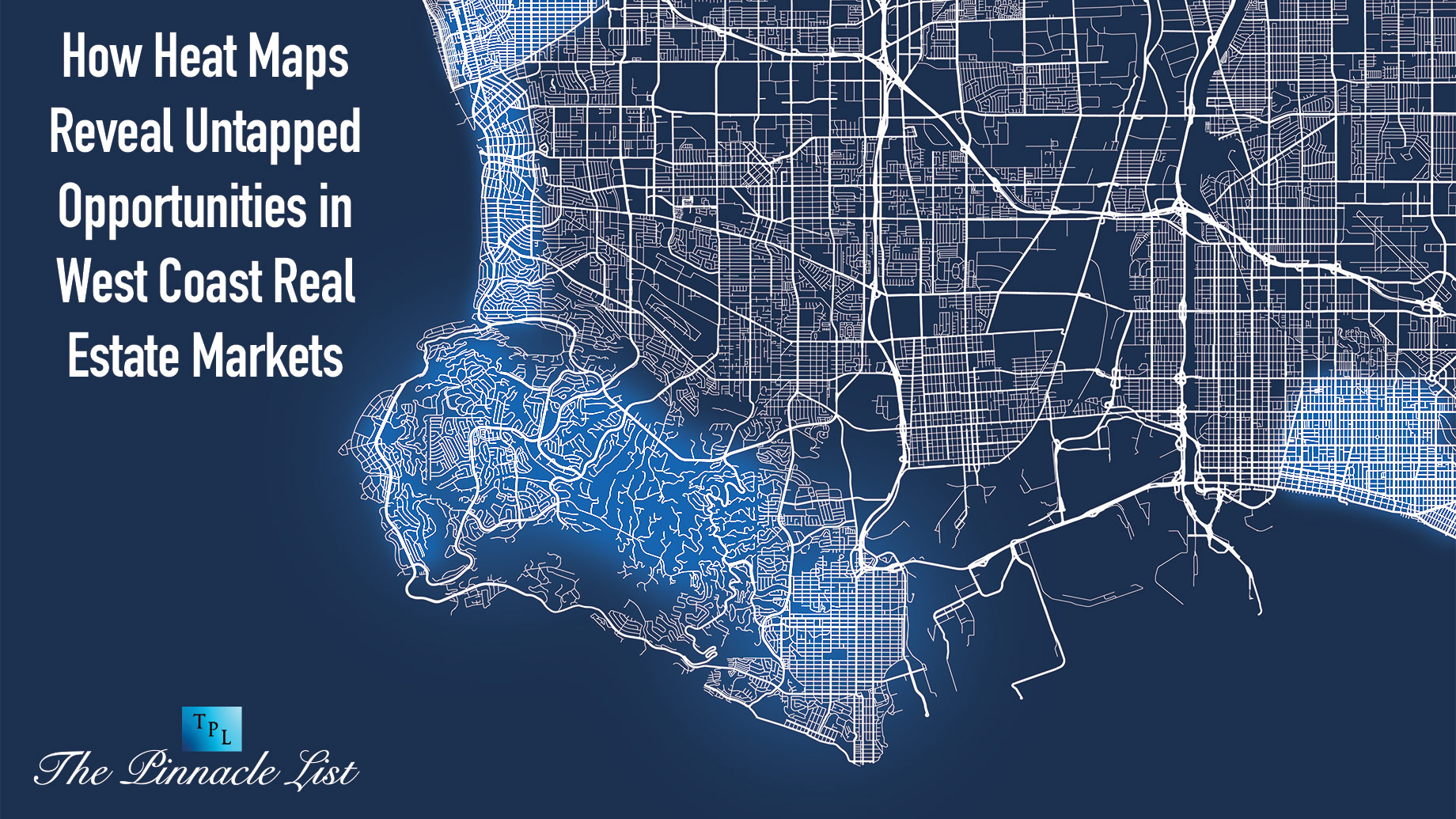
According to the most recent real estate market forecasts, experts anticipate annualized real estate growth of around 2% in North America for the second quarter of this year and 1.5-2% for the rest of the year. As of September 2024, the median price of a house on the West Coast was $390,000, up from $195,000 a decade ago. This corresponds to an increase of 7.18% a year, or $19,500 on average, in West Coast property value.
However, the number of properties being listed for sale continues to increase compared to 2023. It has grown by almost 30%, rising for twelve months in a row, and has been at its highest level since the end of 2019.
Compared to 2023, the number of unsold homes has increased by 22.5%. This includes homes that are under contract. There was a pronounced increase in new listings in September 2024, which strongly correlated with growth in the number of pending listings across vast markets in October, such as Seattle and other West Coast markets.
How heat maps help investors gain insight into real estate markets
Against the backdrop of these conflicting trends, heat maps are increasingly becoming a valuable tool in the real estate industry for identifying patterns and untapped opportunities. Heat maps provide an insightful view of price trends, demand, and other key factors, highlighting areas that may be ripe for investment, even in highly competitive markets.
These tools use data from property sales, rental prices, and demographic trends and visually represent it with color gradients. The hotter the color, the higher the activity or demand in that area. They can uncover dynamic new markets, areas with tax incentives, rental demand shifts, demand for vacation homes, and real estate properties in close proximity to major employers.
Identifying opportunity zones
Opportunity zones are designated areas that offer tax incentives for development and investment. Certain California zip codes may stand out on heat maps due to increased development activity, affordable properties, and future potential. One zip code to watch is 90061 (South Los Angeles), an area with significant opportunities for renewal, where interest from developers and investors is increasing.
Chula Vista has become a hotspot for affordable housing development due to its proximity to the San Diego metro area and infrastructure investments.
Dynamic suburban markets
As urban centers become increasingly expensive, many buyers and investors are shifting their focus to surrounding suburban areas. Heat maps can reveal emerging neighborhoods in suburban zip codes that offer significant potential for growth. For example, the San Francisco Bay Area is seeing increased demand as homebuyers look for more affordable options outside the city while still being close to the tech hubs of Silicon Valley.
Sylmar and Santa Clarita are experiencing growth as families and young professionals move out of the more expensive parts of Los Angeles, searching for better deals without compromising on convenience.
Changes in rental demand
Real estate heat maps track rental prices, sales trends, and overall market demand. Heat maps can uncover underpriced or undervalued markets where prices may be poised for growth by comparing these metrics over time. For example, Ontario has emerged as an affordable alternative to the more saturated Southern California markets.
Demand for vacation homes
Heat maps can uncover areas with a growing demand for second homes or vacation rentals, especially in regions like La Quinta, known for its golf courses and luxury resorts. Carmel-by-the-Sea is a popular coastal destination for high-end vacation properties, showing up as a hotspot on real estate heat maps due to its consistent demand.
Proximity to major employers
Heat maps can highlight areas with rising demand due to proximity to major employers. Mountain View is home to companies like Google, Intuit, LinkedIn, and Microsoft. This area consistently shows high demand for both residential and commercial properties.
Final thoughts
Heat maps are a powerful tool for revealing untapped opportunities in the competitive West Coast real estate market. They visually represent key trends that might otherwise go unnoticed, enabling investors to uncover opportunities in regions poised for significant growth.